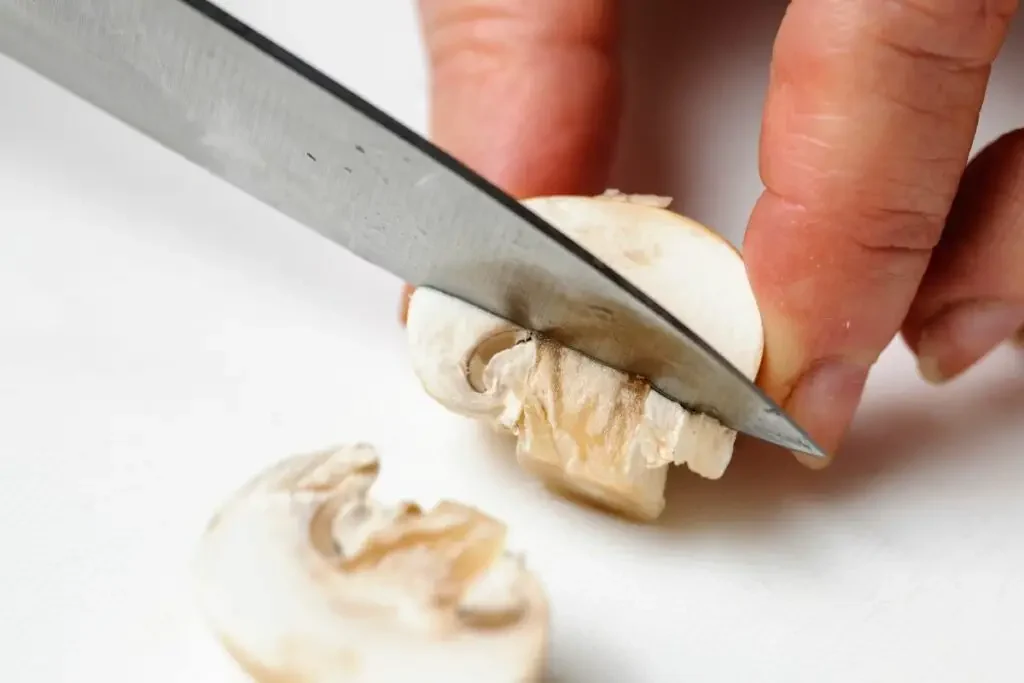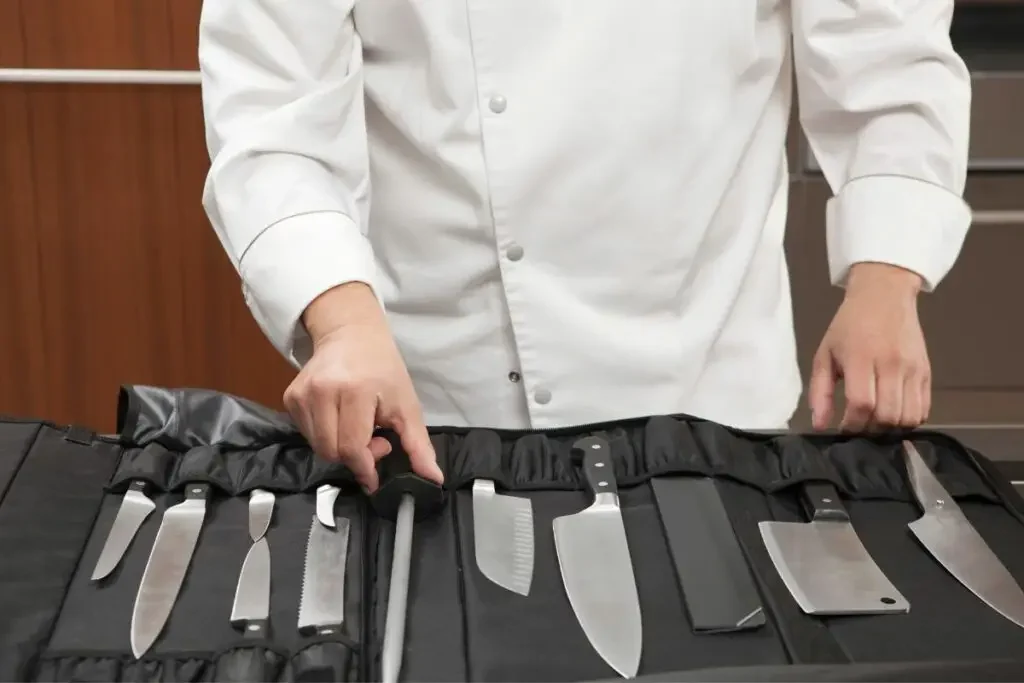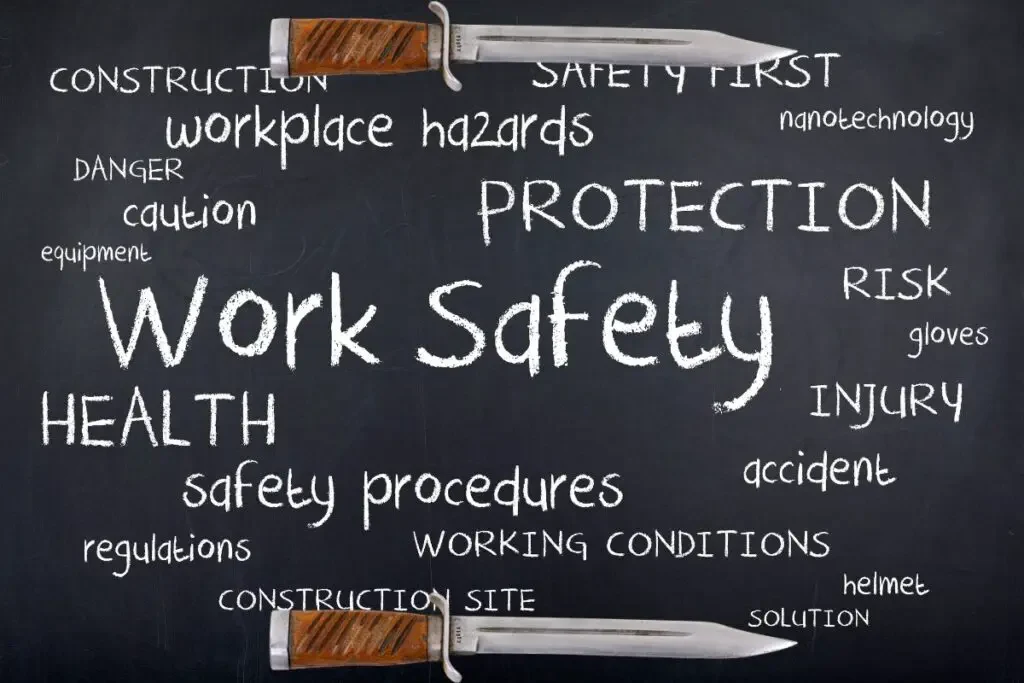As an Amazon Associate, we earn from qualifying purchases with no additional costs for you.
Knives are an essential tool in our daily lives, whether it is for cooking, camping, or other outdoor activities. However, knives can also be dangerous if not handled correctly. Mishandling a knife can lead to serious injuries that can be life-threatening. Therefore, it is crucial to understand the importance of knife safety and to know how to handle knives safely.
Knife safety is an important part of knife ownership and responsible knife use. Knives used incorrectly or inappropriately can result in injuries to the knife user or others nearby. Injuries caused by knives can range from minor to significant wounds with long-lasting consequences.
We will discuss why knife safety is crucial and provide tips on handling knives safely in different situations. We will also discuss the importance of selecting the right knife for the right task, the safety features of knives, and encouraging responsible knife use.
The Importance Of Knife Safety

Knives are a tool with basic origins, but the creation of cutting tools and the evolution of the knife revolutionized cultures and enhanced the quality of life of humans.
However, as with all tools, there is an inherent danger in their use, especially when they are not used for the intended purpose, carelessly, or without safe protocols.
Everyone who has not used a knife properly knows what I am talking about and has the scars to prove it.
Knives have come a long way since the early days of sharp slivers of stone, and as they have improved, the dangers of severe injury have also increased.
The dangers of using a knife can be minimized by recognizing the potential for injury, taking care to use knives responsibly, with appropriate care, and putting certain safety protocols in place to keep us and our loved ones safe.
The Dangers of Mishandling Knives
Everyone knows that knife-related accidents and injuries are common. Many of these accidents occur due to the mishandling of knives or improper usage.
Mishandling a knife can lead to severe injuries, ranging from cuts and lacerations to nerve and tendon damage.
Not all knife injuries are severe, but even small lacerations can lead to infection and complications that can adversely affect you.
There are several common mistakes that knife users make that contribute to knife-related accidents.
Using A Dull Knife Is Dangerous
It may seem counter-intuitive, but a sharp knife is safer than a dull knife. Some people are afraid to use a sharp knife because the cutting edge has the potential to cut deeper more easily than a dull knife.
However, a sharp knife is safer than a dull knife when the knife is used as intended. Dull knives require more pressure and force to cut through the material.
The additional force required increases the potential for the knife to slip and stab or cut you. A dull knife can still inflict severe injuries, especially when pushed with great force.
A sharp knife, in contrast, slices more easily through the material, requiring less force to make the knife cut. This gives the knife user more control over the knife, and the cut, making the knife safer.
TIP: Are you looking to buy a new whetstone? Check out our recommendations (we personally use the first three ones):
Our PRO choice whetstones combo (Amazon links):
- Fixing stone: Whetstone SHAPTON Ceramic KUROMAKU #320
- Sharpening stone: Suehiro CERAX soaking whetstone: Medium #1000
- Finishing stone: Whetstone SHAPTON Ceramic KUROMAKU #5000
Our budget choice (Amazon link): Sharp Pebble Extra Large Sharpening Stone Set
Improper Knife Handling

Holding a knife incorrectly or using the wrong grip can lead to injuries. Many people are not aware of how to hold a knife properly or how to change their grip on a knife when using it for different tasks.
Changing the way you grip a knife depending on the task being performed with the knife increases the safety of knife use and can prevent injuries.
Not paying attention When Using A Knife
Knives have become so integrated into our lives that we become blasé about using them in our daily tasks. Losing respect for a knife can result in distraction while using the knife, increasing the potential for an accident.
Using a knife without proper lighting can also lead to injuries. If you cannot see clearly where the blade is cutting, you risk your hands or fingers getting in the way of the cutting edge.
Focus on the task at hand is a requirement for safe knife use, and you should always keep your eyes on the knife and the material being cut and never look away while slicing.
Using a Knife For Unintended Purposes Is Dangerous
As already mentioned, knives are tools, but tools are created with a purpose in mind. Any tool that is used outside of its intended design can become a dangerous implement.
We have all used knives for tasks other than their intended purpose, but this is a lazy attitude to knife use and can lead to serious injury. The safest protocol is to put the knife down and go and get the right tool for the job at hand!
Some common unintended uses for knives that can result in injury are using a knife as a screwdriver, bottle opener, prybar, or tin opener.
Not Storing Knives Properly Is Dangerous
Properly storing your knives when not in use is as important in knife safety as proper use. Correct storage of your knives protects the knife, extends their lifespan, and protects you and others from accidents.
Never leave a knife in an exposed position on a countertop, work surface, or in a drying rack. Children can reach these knives, or anyone can accidentally injure themselves by brushing against the sharp edge or knocking the knife off the surface.
Never store a knife with an exposed blade in a kitchen drawer. You may cut yourself when you reach into the drawer to look for other items or when trying to retrieve the knife.
A knife block is a good way to safely store knives since the blade is completely shielded during storage. If you store your knives in a drawer, use a knife organizer to keep the knives in place and store the knives with the cutting edge down to prevent injury when retrieving the knife.
Another option is to get a sheath or a knife guard for storing knives safely in a drawer. This strategy shields the blade from damage in the drawer and protects the knife user.
TIP: Storing knives properly can help prevent injuries. Find out some pro safety tips for storing knives in a drawer in our article below!
Storing Knives in a Drawer: 7 Ideas How to Do It Properly
Injuries From Incorrect Knife Use
The injuries resulting from mishandling a knife can be severe and even life-threatening. While accidents can still occur, even when knives are used safely, practicing proper knife safety protocols is best to minimize the risk of injury.
Injuries by knives can include the following.
- Deep cuts or lacerations. These injuries can be severe enough to require stitches, lead to infection, and prevent you from using the injured part for some time. This could affect your work or your ability to use the affected appendage.
- Nerve or tendon damage. This type of knife injury may require surgery to rectify, but even with surgery, the injury may leave lasting or permanent damage.
- Broken or damaged bones. Believe it or not, some knives can cut into bone, chipping or fracturing the bone, depending on the force with which the knife is used. This long-term injury could take several weeks to heal, impacting your daily life.
- Amputations. Some knives are large, sharp, and weighty enough to sever fingers completely. This serious injury would require surgery to attempt to reattach the appendage, which may or may not be successful. This can be a life-altering injury.
- Infections. Any injury inflicted by a knife has the potential to become infected. The risk of infection is increased by the material being cut at the time. For example, cutting yourself while slicing raw meat may introduce bacteria into the wound, resulting in infection.
As indicated by this list of potential injuries, it is crucial to handle knives safely to avoid accidents and injuries.
Proper Knife Handling Techniques

Proper knife-handling techniques can prevent accidents and injuries. While many of these tips are common sense, many of us forget these principles in the interest of getting the task done.
Don’t take shortcuts in your knife use; the potential injuries are not worth the risk. I have compiled some reminders on handling knives safely, which is worth considering whether you are an experienced knife user or a newbie!
- Choose the right knife for the job. Use the appropriate knife for the task at hand. Most knives have designs built into the handle and blade to promote safety when the knife is used for a particular task. Using the wrong knife can increase the risk of injury when the knife does not perform as you expect for the task at hand.
- Hold the knife correctly. Grip the knife handle firmly and securely with your dominant hand. In some cases, choking up on the blade by placing your thumb and index finger on either side of the blade’s base gives you more control for finer tasks. Use your other hand to hold the item you are cutting, and remember to keep this hand away from the knife’s cutting edge.
- Keep the blade away from your body. Keep the blade pointed away from your body and never cut towards yourself. Never use a part of your body, such as your leg, as a cutting surface. The knife can easily cut through the material and into your body below.
- Cut on a stable surface. Use a stable cutting board or surface to prevent the knife from slipping. Cut on a secure surface that won’t unexpectedly collapse or wobble and cause you to lose control over the knife and the direction you are cutting.
- Use the right cutting action. Some materials require a push cut, pull cut, or a rocking motion to chop small items. Using the technique appropriate to the ingredient or material while cutting helps you to maintain control of the knife and prevent it from slipping and causing an injury.
- Keep your knives sharp. A sharp knife is less likely to slip and cause injuries than a dull knife. Learn sharpening skills so you can keep your knives sharp and not have to wait to have them sharpened and be tempted to use a dull knife.
Following these proper knife handling techniques and basic principles, you can significantly reduce the risk of accidents and injuries when using knives.
Additionally, keeping knives sharp and giving them the proper maintenance they need will help ensure they are safe to use.
TIP: Worn out or damaged knives can pose a safety risk, but how do you know when it is time to replace your old knives? Find out here!
5 Signs You Need to Replace Your Kitchen Knife + How Often
Knife Safety Tips For Specific Situations

Different knives are used in different circumstances, often requiring safety tips specific to these situations.The diverse way we use knives in our daily lives means no safety protocol applies to every form of knife use.
I have compiled a list of do’s and don’ts for various knife use scenarios that may help with your knife safety protocols.
Cooking And Food Preparation
Cooking and food prep is one of the most common situations where most people use knives more than any other part of their daily life.
These basic knife-use principles for food prep can help avoid unnecessary accidents.
- Use a stable cutting board and keep it dry to prevent the knife from slipping.
- Cut away from your fingers and keep them away from the blade.
- Use a paring knife for peeling and trimming and a chef’s knife for chopping and slicing.
- Keep the blade sharp and avoid cutting through bones or frozen food.
- Use a knife guard when storing or transporting knives.
- Choose good quality knives to use for your food preparation.
Outdoor Activities And Camping
This is one of the areas where I use knives often and the most common situation where knives are used for tasks other than their intended purpose.
- Use a knife with a locking blade and a sturdy handle.
- Choose the right size and type of knife for the task at hand.
- Keep the blade sharp and store the knife in a sheath when not in use.
- Cut away from your body and keep your fingers away from the blade.
- Never throw a knife or use it as a weapon, except in life-threatening situations.
Hiking And Backpacking
Many hikers neglect to pack a good knife in the backpack, which is an oversight when the hike does not go as planned or meal times come around, and you realize you haven’t packed an appropriate knife.
I like to have a selection of knives in my hiking gear to ensure I have a knife for every purpose. I generally carry a pocket knife in my pocket, a multitool on my belt, a bushcraft knife on my belt, and a smaller bushcraft knife in my backpack which is the right size for food prep but can be used as a bushcraft knife in a pinch.
The following are my suggestions for knife selection and safety for hiking and backpacking.
- Use a lightweight and compact knife.
- Choose a pocket knife with a locking blade and a durable handle.
- Use the right size and type of knife for the task at hand.
- Keep the blade sharp and store the knife in a sheath or folded when not in use.
- Use a knife guard when storing or transporting knives in your backpack.
Other Situations Where Knives Are Commonly Used
Many people, myself included, like to carry an EDC knife in daily life to have one of these useful tools available when we need it.
The temptation with this type of knife use is to use your knife for purposes other than those for which it was intended.
If you frequently find yourself in this situation, you may need to carry more than one EDC knife or choose to carry a good quality pocket knife and a multitool. The knife I use for appropriate jobs, and the multitool handles tasks outside of that scope.
The following are my tips for general knife use and carry.
- Carry the right size knife for the tasks you most commonly perform.
- Never use a knife outside of its intended use.
- Keep the blade sharp and store the knife in a sheath or folded when not in use.
- Cut away from your body and keep your fingers away from the blade.
- Always be aware of your surroundings and potential hazards.
By following these knife safety tips for specific situations, you can ensure that you are using knives safely and effectively.
Teaching Knife Safety To Children
Teaching knife safety to children is crucial as they are often curious and may not fully understand the dangers of mishandling knives.
I am of the opinion that children should learn safety protocols for many of life’s dangers as early as possible to prevent dangerous situations and regrettable, preventable accidents.
The following are my suggestions on the subject of teaching children safe knife use.
- Start with the basics. Teach children the different parts of a knife and how to hold it properly.
- Use appropriate knives. Choose knives appropriate for children’s age and skill level, such as plastic or child-safe knives.
- Supervise children around knives. Always supervise children when they are using knives, even if they have been taught the proper techniques.
- Set clear rules. Establish clear rules and guidelines for using knives, such as cutting away from the body and not using knives as toys.
- Practice safe techniques. Encourage children to practice safe techniques, such as using a stable cutting surface and keeping fingers away from the blade.
- Model safe behavior. Model safe knife-handling behavior for children by using proper techniques and following safety rules yourself. Your children learn by watching you.
- Reinforce safe behavior. Praise and reinforce safe behavior when children are using knives correctly.
Teaching knife safety to children can help them develop important life skills and prevent accidents and injuries. Additionally, teaching children the importance of knife safety will help them become responsible and safety-conscious adults.
Conclusion
Knife safety is essential to prevent accidents and injuries. Mishandling a knife can lead to severe injuries, ranging from cuts and lacerations to nerve and tendon damage. You can significantly reduce the risk of knife accidents and injuries by implementing proper knife selection and handling techniques.
Following these guidelines and techniques can help prevent knife-related accidents and injuries and promote a safe and responsible knife culture.
TIP: An important part of knife safety is keeping your knives sharp. A dull knife can be more of a danger than a sharp knife! Find out all the details in our article below!
10 Reasons Why A Sharp Knife Is Safer Than A Dull One (Tested)
